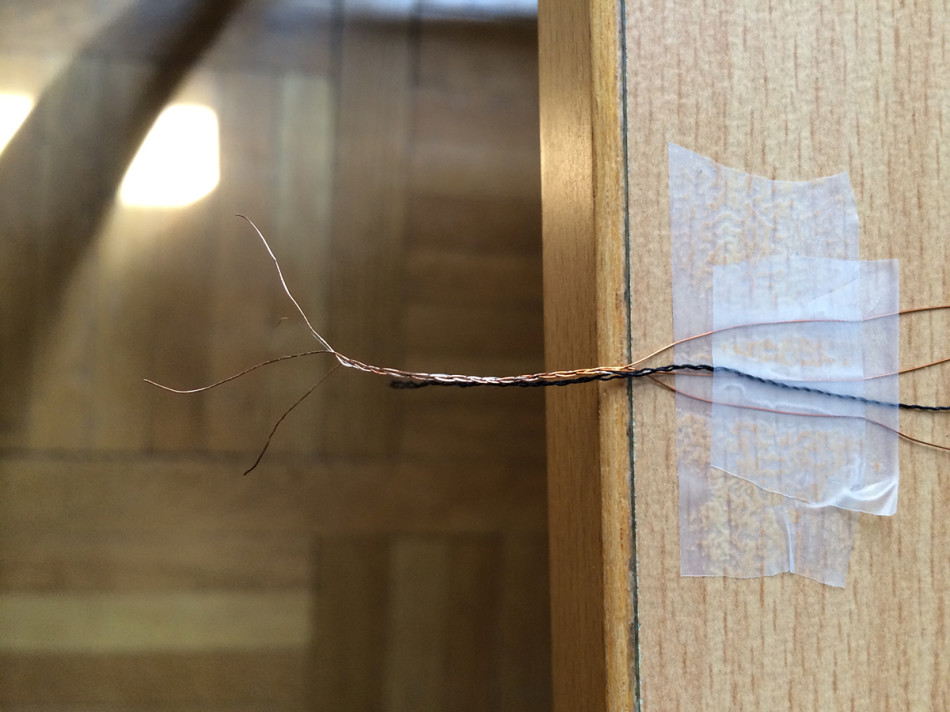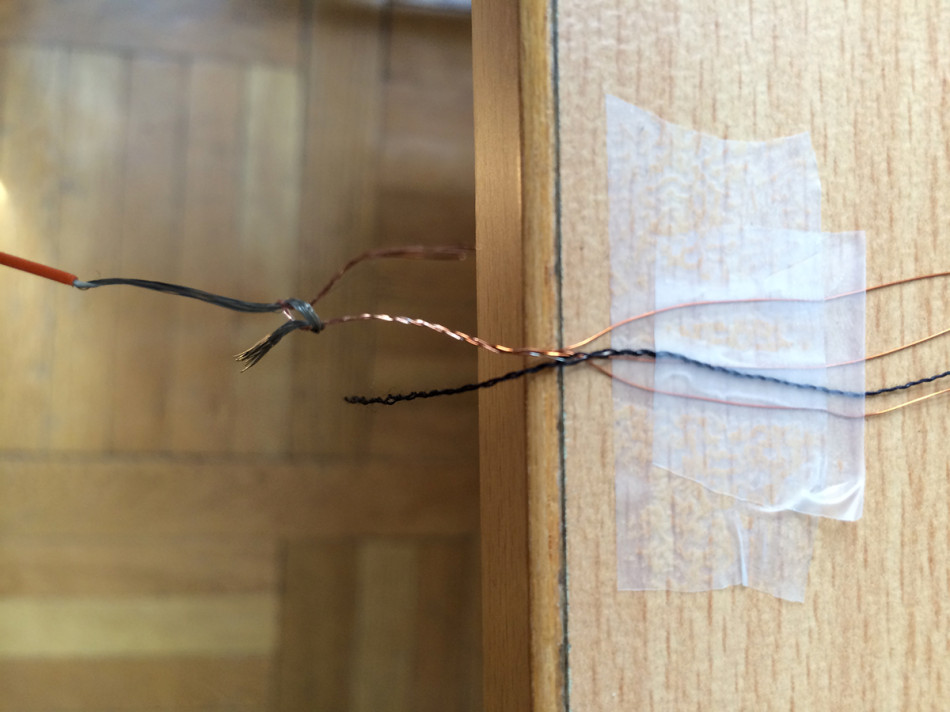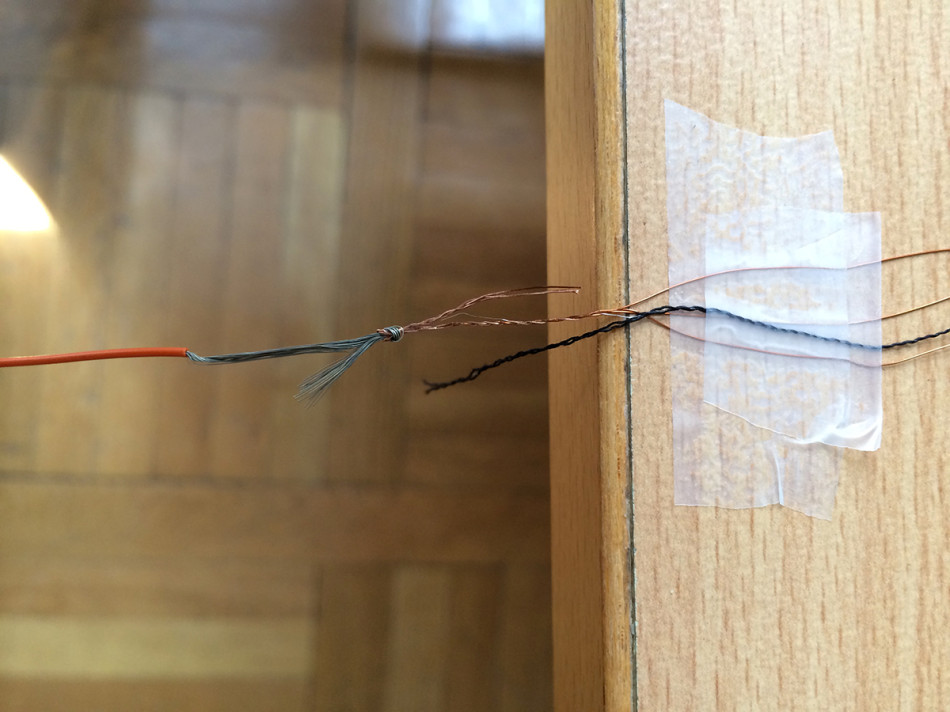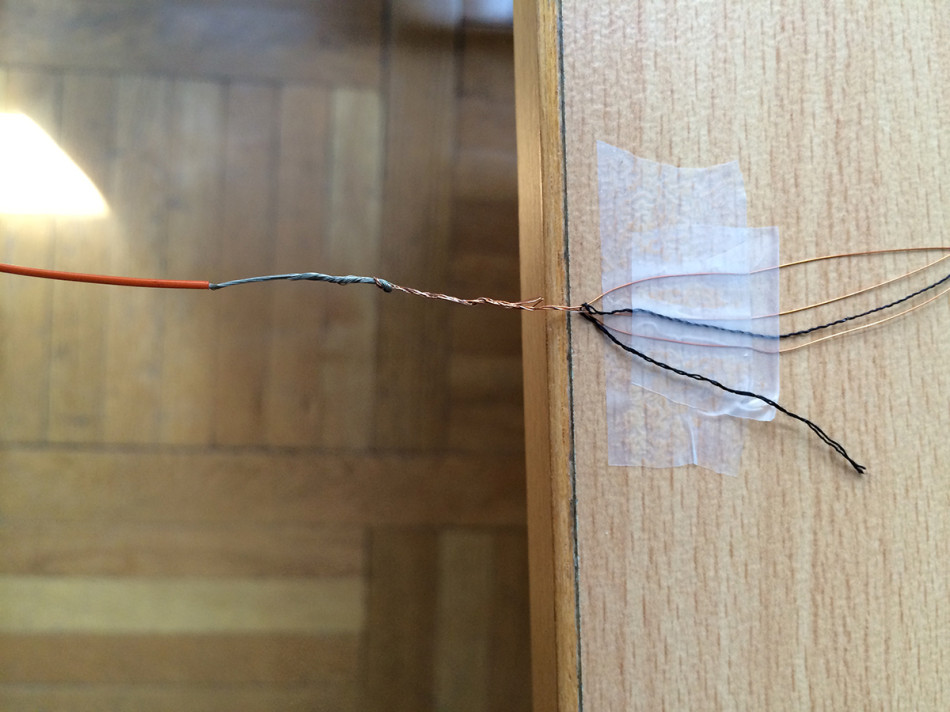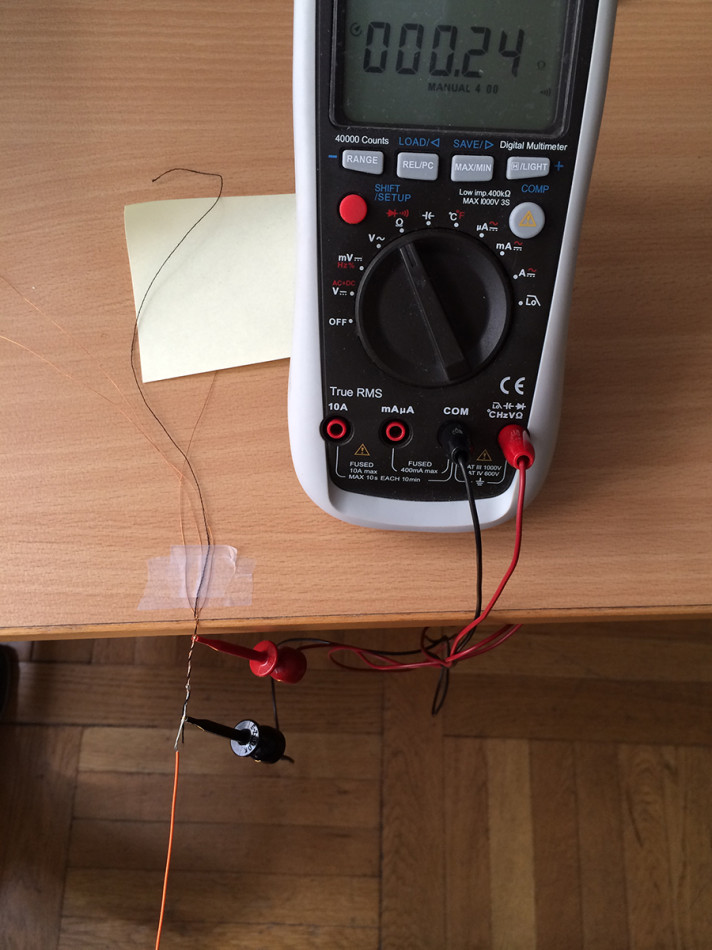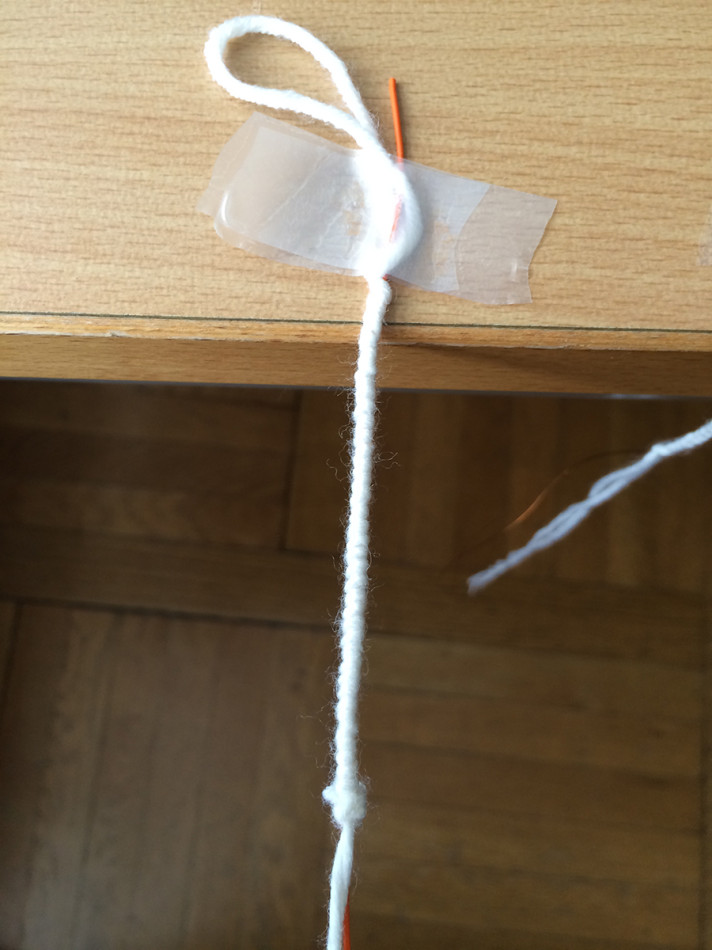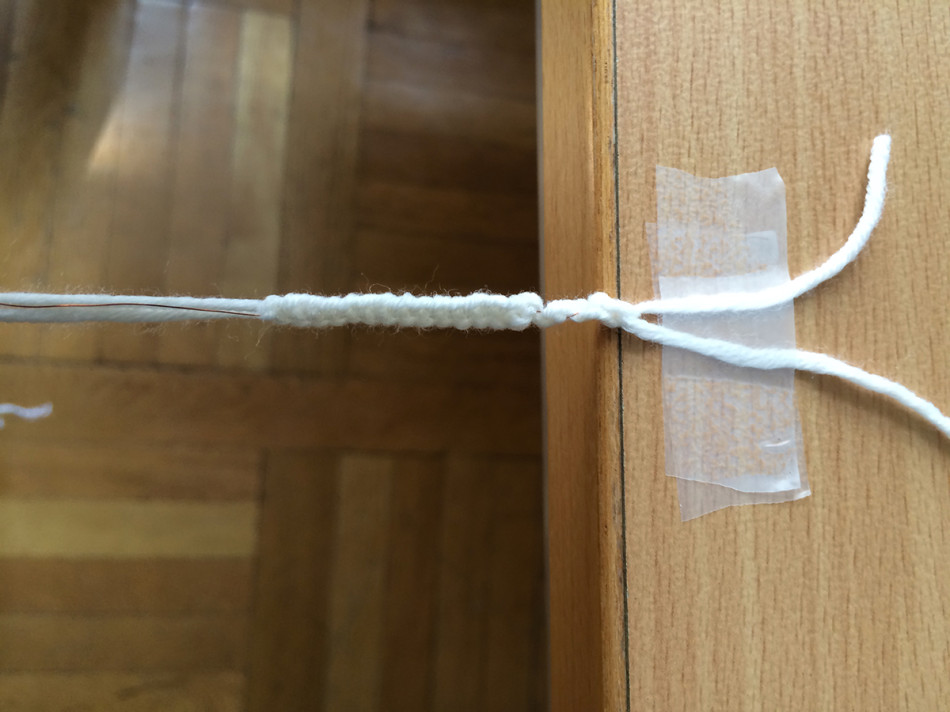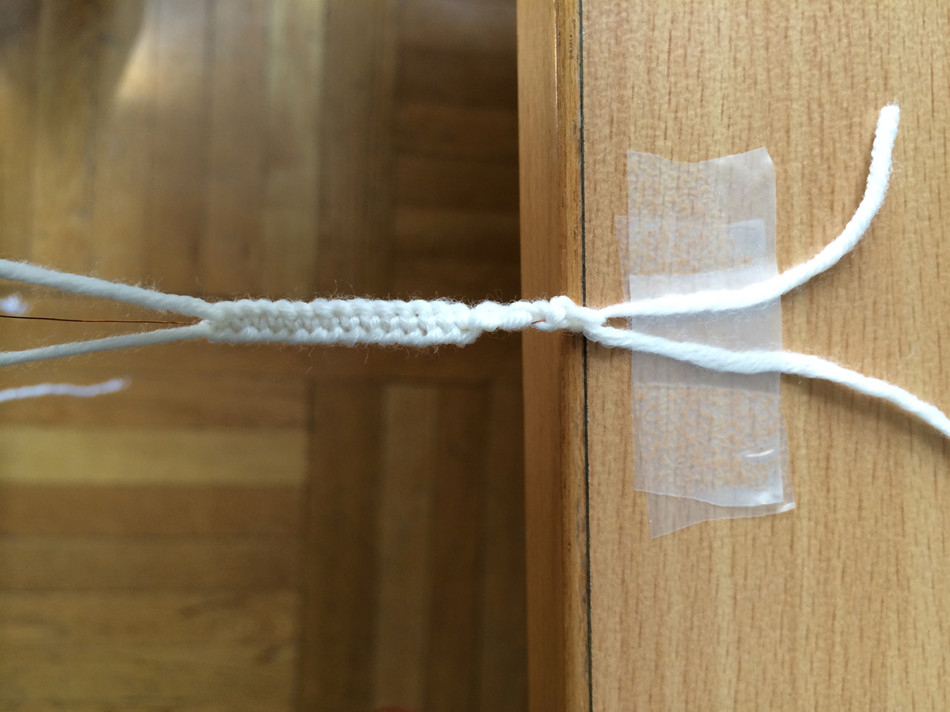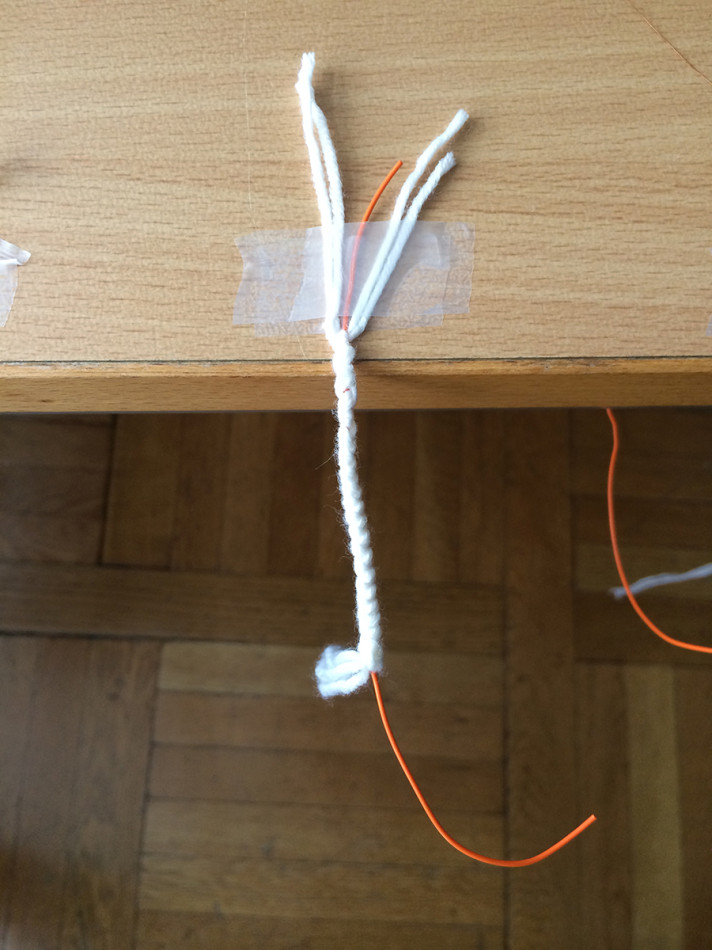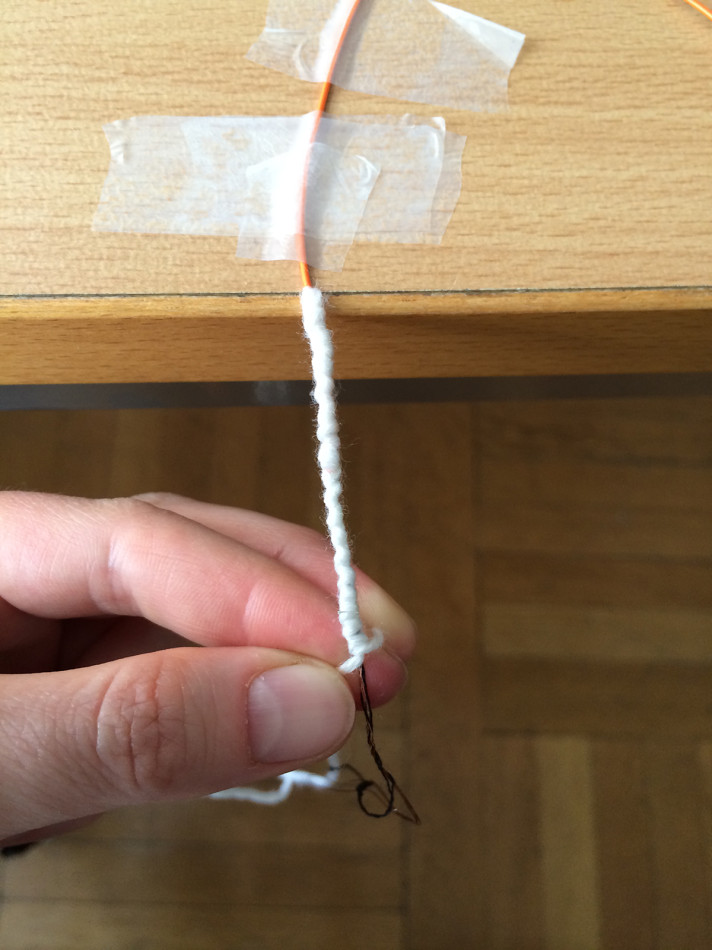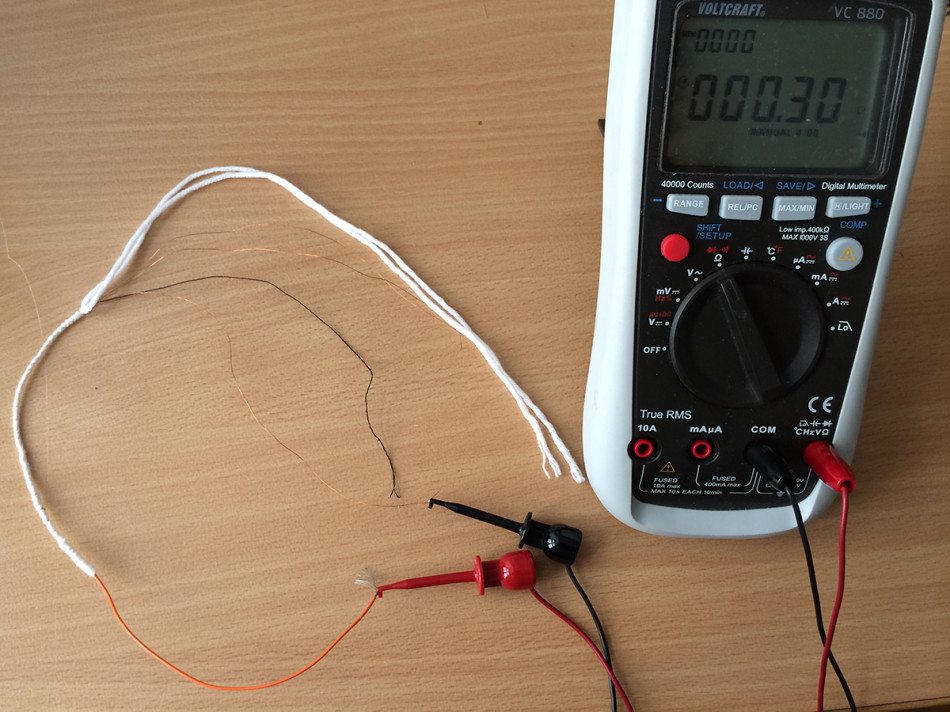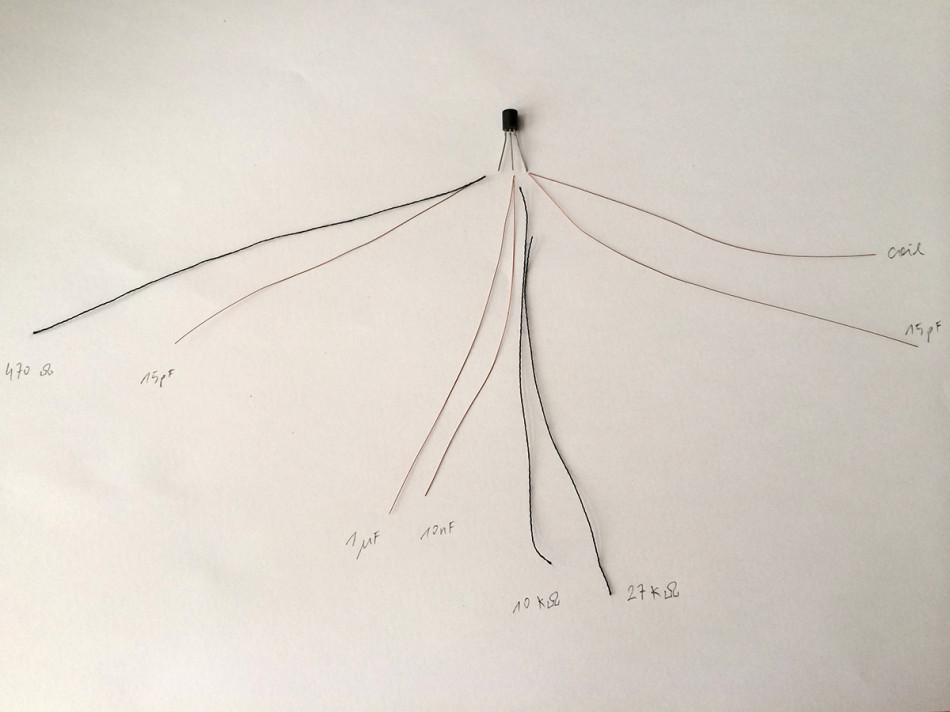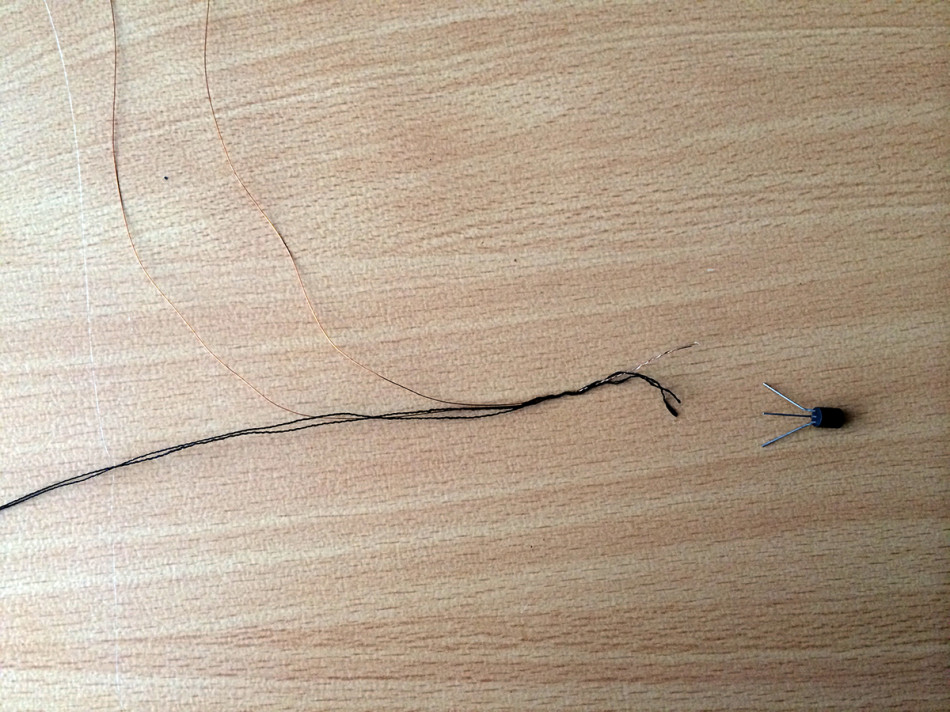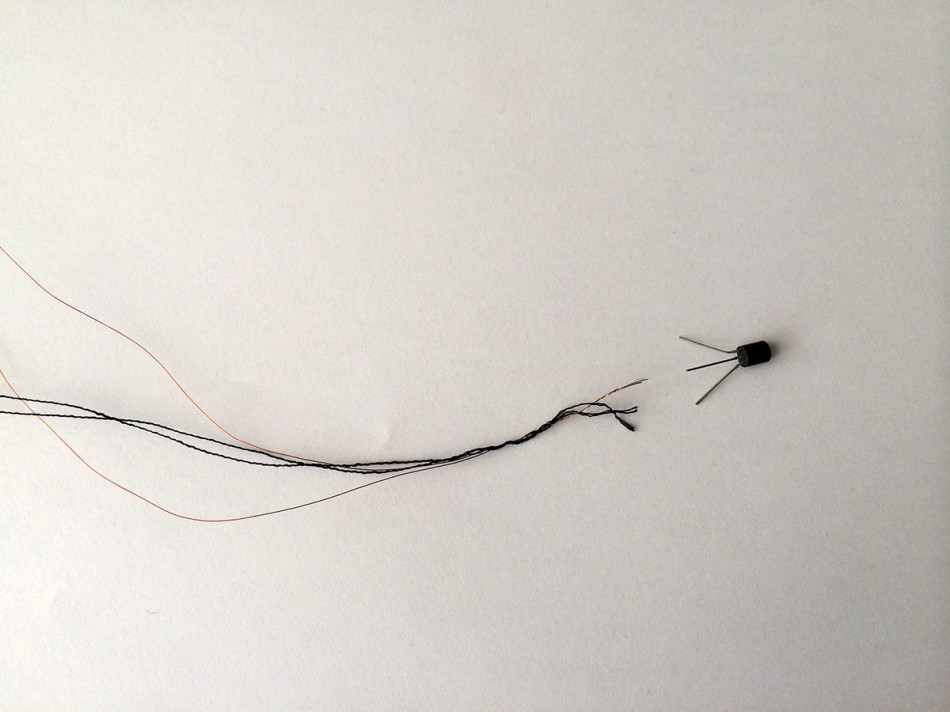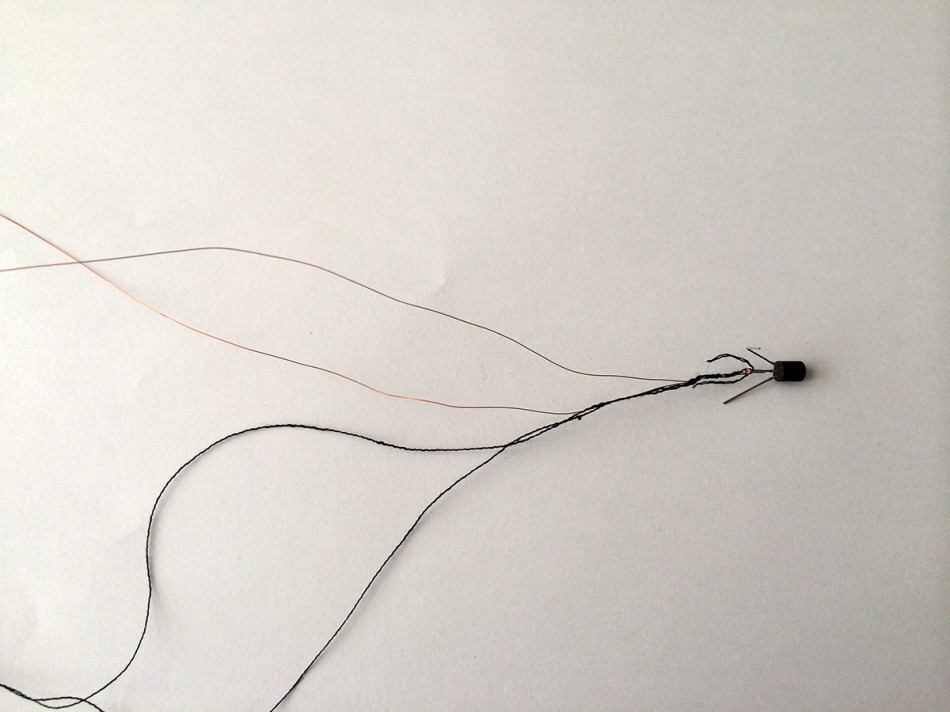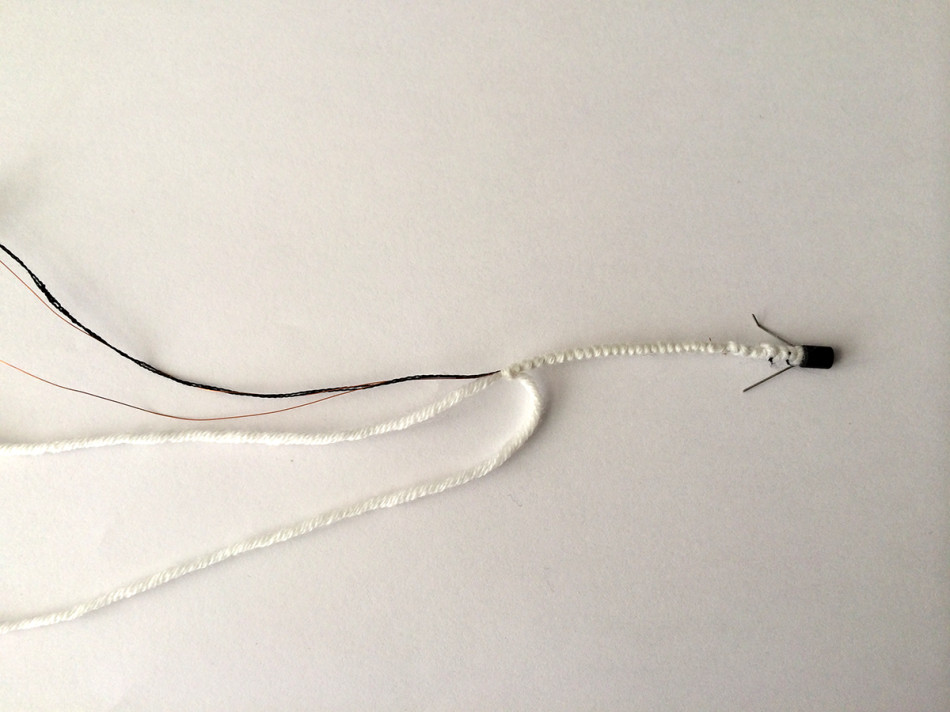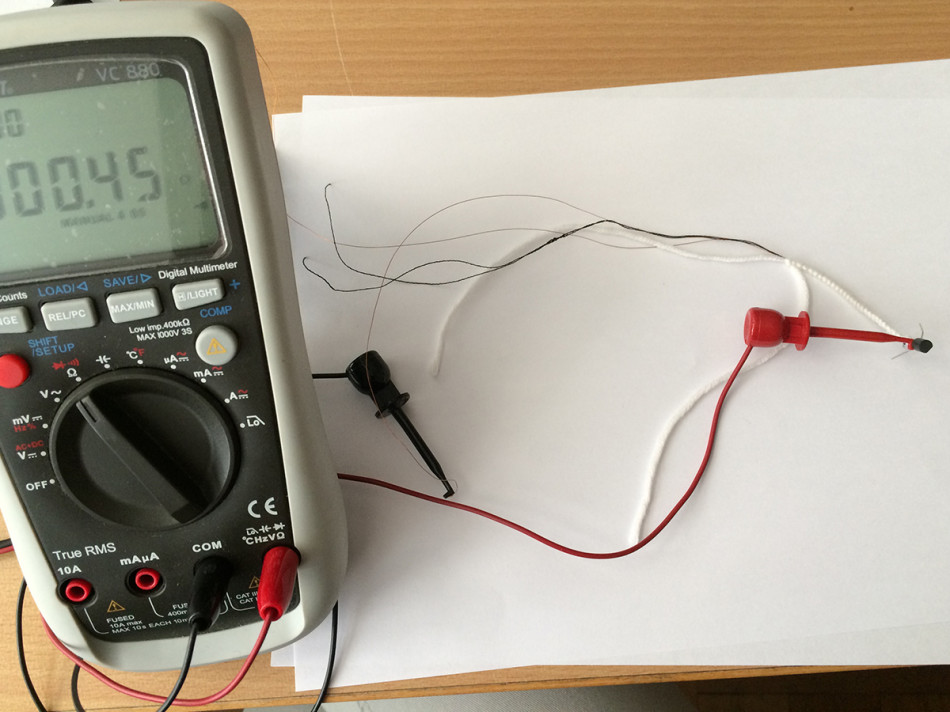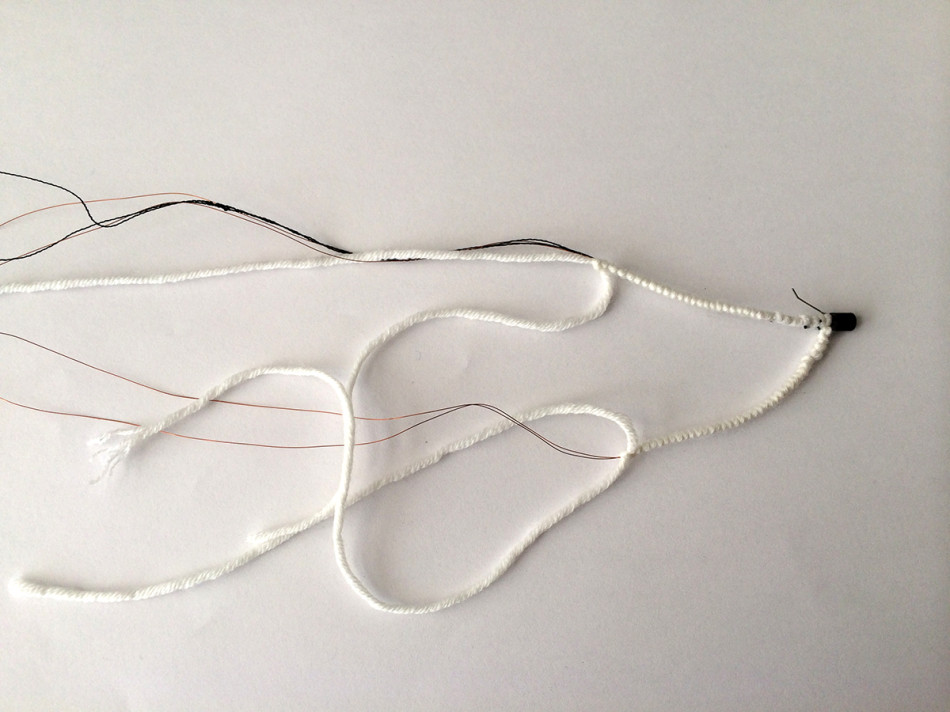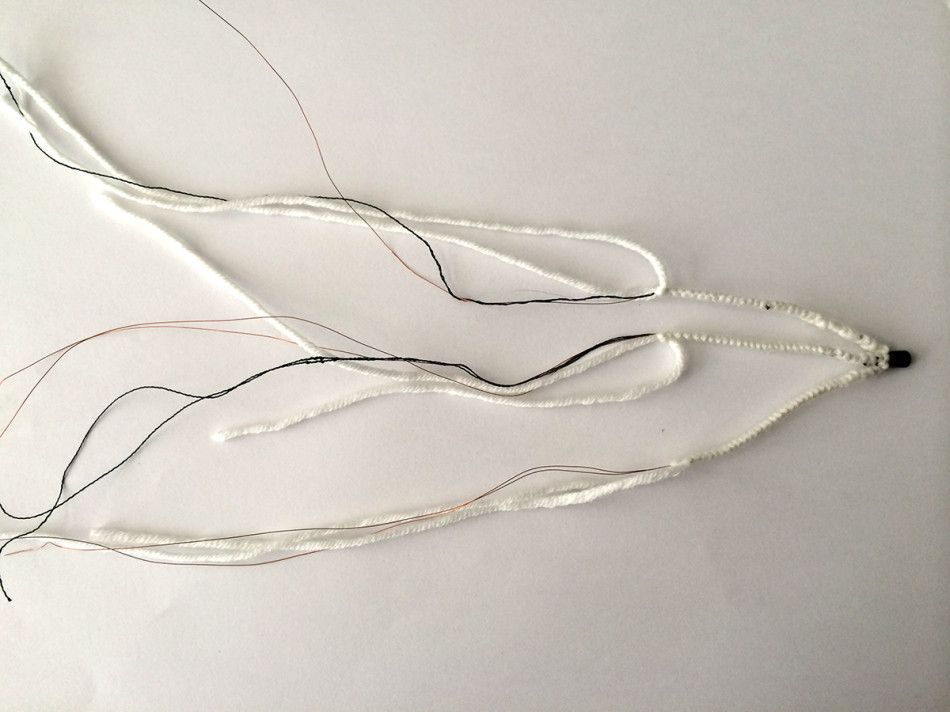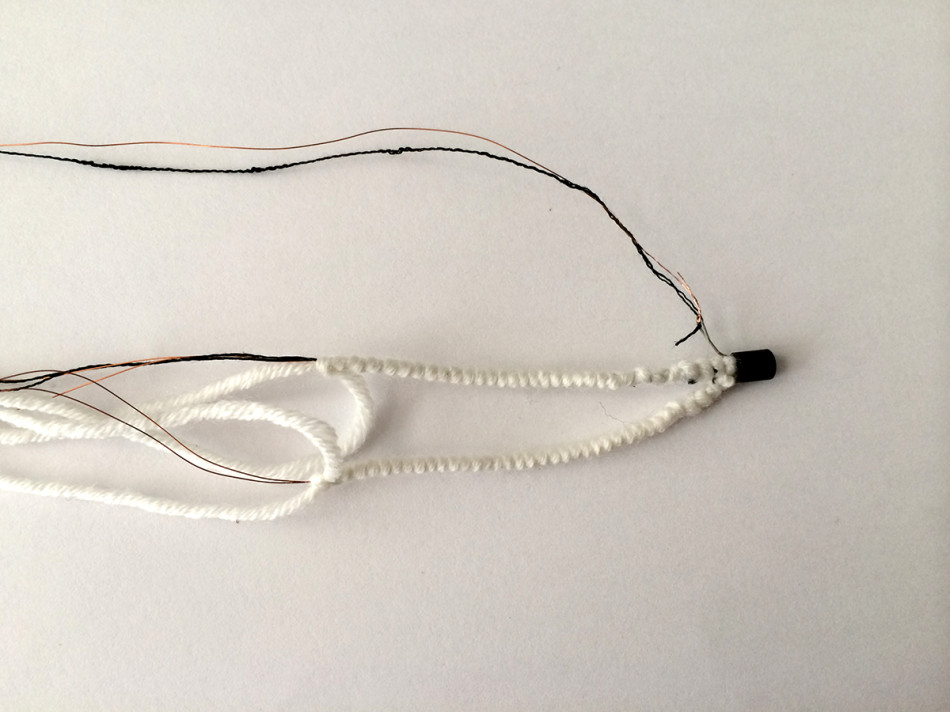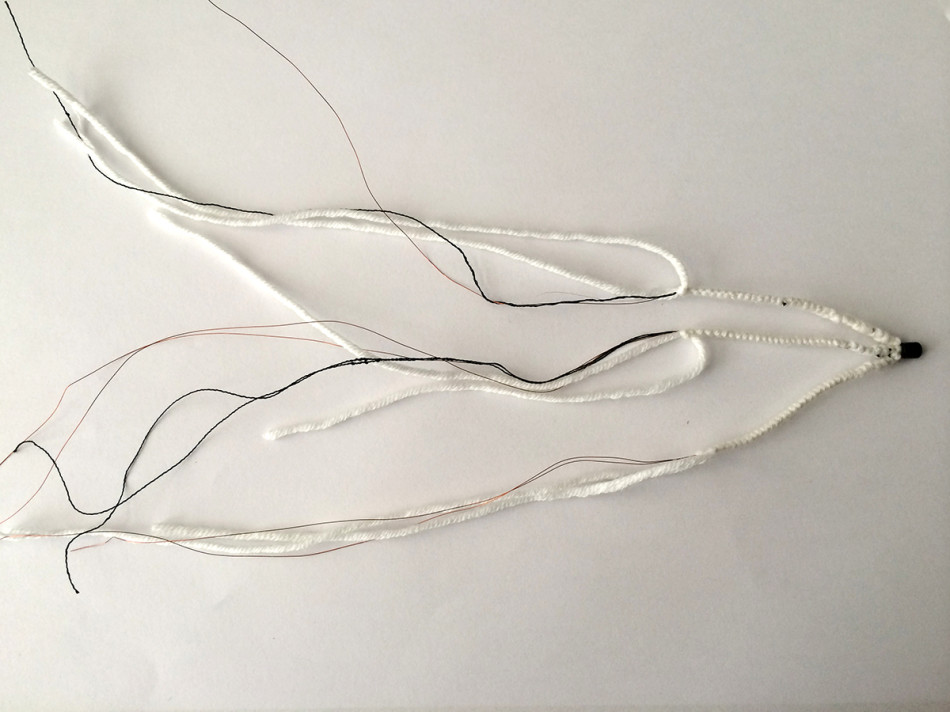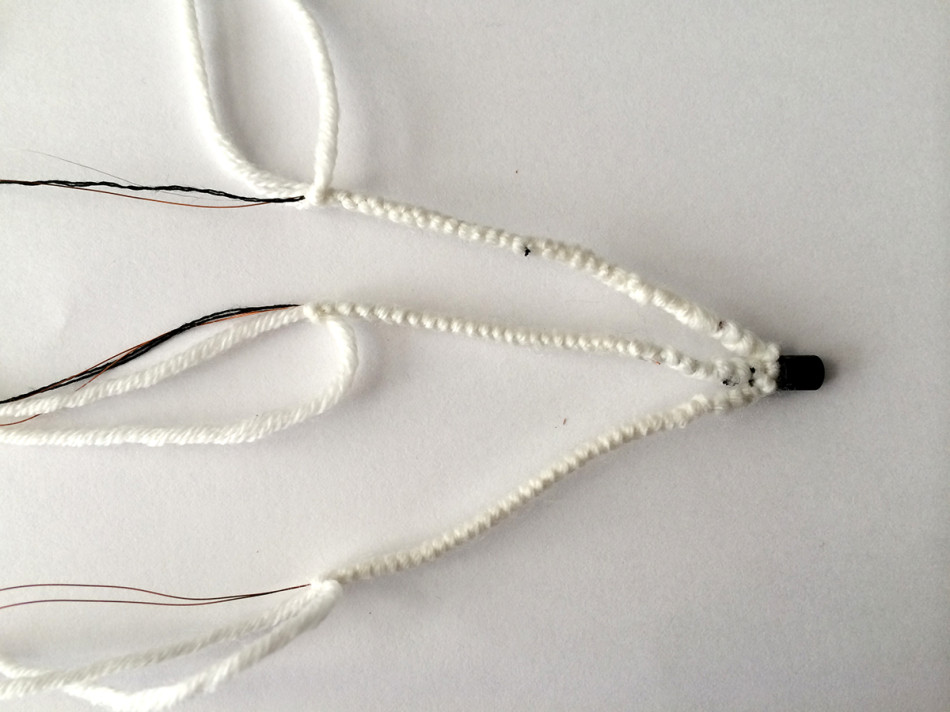As not all electronic functions can yet be built with textile patterns and routines, many projects rely on the incorporation of conventional electronics. On the other hand, even textile produced electronic components need ways and modes to be connected to each other to form strong and reliable connections. There is a good amoun of experiments already done in that area that are a great inspiration for us, examples thereof are displayed here http://www.kobakant.at/DIY/?cat=32 and here http://www.textileworld.com/Issues/2010/April_Online_Issue/Features/E-Textiles_For_Wearability-Review_Of_Integration_Technologies among many others.
What is important to us in the context of our work, is to find possibilities to create functional electronic objects that rely on (amateur) textile craft knowledge instead of electronic knowledge – to the extend these fields are still separated from each other. This includes to pass on techniques like soldering and focus on ways of binding, knotting, as well as how to prepare the individual yarns and materials so they can be used as intended.
Connecting textile components to wires:
Connecting a transistor to other components in a circuit:
